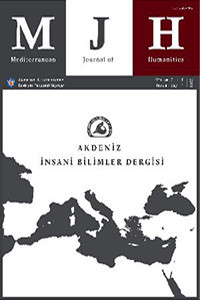Öz
Turkey, due to its geographical position, is on the route of many types of migration and also shelters numbers of different migrants. These numerous migrants also include large numbers of children. The aim of this research was to examine the status of migrant children in Turkey, taking as an example the province of Van, located in eastern Turkey bordering Iran. Migrant children in Turkey are classified into two main groups, those living in satellite towns together with their family (usually of younger ages) and those (mostly at 14-17 years old) who are protected under the Social Services and Child Protection Agency because they have migrated without any companion. The findings reveal that most of the migrant children are from Afghanistan and the main reason for their flight was the security problems in Afghanistan and the worsening economic condition in Iran where they could not obtain either a residence or an education permit. Both those children coming with their families and those unaccompanied take the first help on applying for asylum and sheltering from the previous migrants. Applying to the UNHCR or to another Non-Governmental Organization not only serves as a starting point of the asylum procedure but also these applications in this respect serve to guarantee their presence and safety in this country.
Anahtar Kelimeler
Kaynakça
- AFAD (Disaster and Emergency Management Presidency of Turkey). “Disaster Report: Earthquake in Van”. (2012). Accessed 01/12/2013. https://www.afad.gov.tr/TR/IcerikDetay1.aspx?ID=107 &IcerikID=570
- AAA (American Anthropological Association). “Statement on Human Rights”. American Anthropologist, New Series, 49/4, Part 1 (1947): 539-543. Accessed 22/05/2014. http://franke.uchicago.edu/aaa1947.pdf.
- AAA (American Anthropological Association). (1989). “Code of Ethics of the American Anthropological Association (Approved June 1998)”. Accessed 25/11/2001. www.aaanet.org/committees/ethics. Accessed April 30, 2014. http://www.aaanet.org/committees/ethics/ethicscode.pdf.
- AAA (American Anthropological Association). (1999). “Declaration on Anthropology and Human Rights”. Adopted by the AAA membership June 1999. Accessed 22/05/2014. http://www.aaanet.org/ about/Policies/statements/Declaration-on-Anthropology-and-Human-Rights.cfm.
- Bokhari, F. (2008). “Falling Through The Gaps: Safeguarding Children Trafficked into the UK”. Children and Society. 22, 201-211. Accessed 01/05/2014. DOI:10.1111/j.1099-0860.2008.00151.x.
- Derluyn I., & Broekaert, E. (2007). “Different Perspectives on Emotional and Behavioural Problems in Unaccompanied Refugee Children and Adolescents”. Ethnicity and Health, 12/2, 141-162. Accessed 01/05/2014. DOI:10.1080/13557850601002296.
- Derluyn I., Broekaert, E, & Mels, C. (2008a). “Social Support in Unaccompanied Asylum-Seeking Boys: A Case Study”. Child: Care, Health and Development, 34/6. Accessed 01/05/2014. DOI: 10.1111/ j.1365-2214.2008.00883.x.
Ayrıntılar
| Birincil Dil | Türkçe |
|---|---|
| Konular | Göç, Etnisite ve Çok Kültürlülük Sosyolojisi |
| Bölüm | Araştırma Makaleleri |
| Yazarlar | |
| Yayımlanma Tarihi | 30 Aralık 2014 |
| Yayımlandığı Sayı | Yıl 2014 Cilt: 4 Sayı: 2 |

